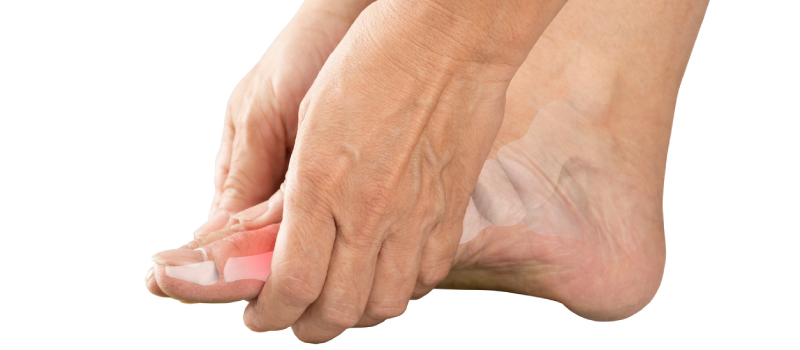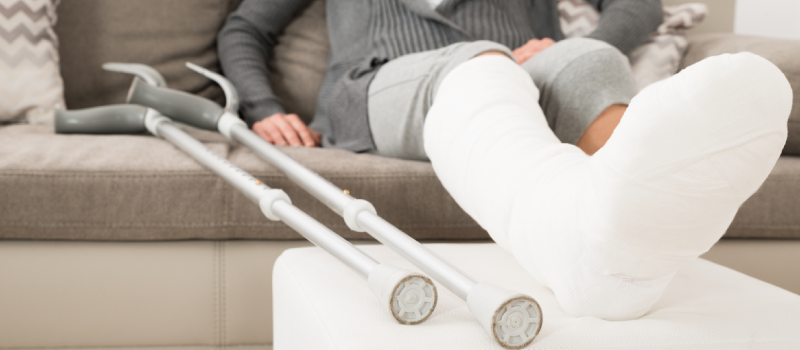Connect With Us
Blog
Items filtered by date: October 2020
Five Reasons Why You’re Too Busy Not to Go Running/Walking
As we enter our 30s, 40s, and 50s, life seems to get busier than ever. Between professional and family obligations, not to mention taking a little time for ourselves and our sanity, it seems like there is always less and less time to get that doctor-recommended 30 minutes of exercise every day. It can be even more difficult if you are suffering from any number of common foot injuries. But the truth is, the busier you are, the more you need to go for that daily run/walk. Here’s why:
Exercise Improves Brain Function
With all the demands placed on you every day, it can be easy to feel overwhelmed. This is compounded by that foggy feeling that many people get in the early morning or after lunch. But what if you could get more done at work in a shorter amount of time? What if you could leave on time most, if not every, day? Well, a little cardiovascular exercise can help with that.
Walking and, especially, running get your heart and lungs working overtime. They have to work extra hard to get more oxygen to your muscles so they can keep up with this increase in activity. But the increase in oxygen-rich blood pumping blood also affects your brain. It can even stimulate the creation of new nerve cells and blood vessels within the brain, effectively reversing some of the aging process within the brain.
Running Can Help Relieve Stress
While a little stress is good for us, pushing us to excel in certain situations, too much can be downright deadly. Fortunately, running and walking stimulate the production of endorphins within the brain. These relaxing chemicals help put you in a better mood and can relax you after a stressful day of work and errands. For best results, try running in a natural setting with fewer people around.
Walking Can Be a Great Group Activity
Looking for a little quality time with the family? Maybe you want to get to know your neighbors better. Taking a nightly walk or jog after dinner can be a great way to spend time with those around you and get that much-needed exercise. It’s a great example of multi-tasking and the kids won’t have the opportunity to get distracted by their phones or tablets.
Weight Loss Can Reduce Other Health Risks
Here at Advanced Foot and Ankle Center, we regularly treat patients with diabetic foot problems. Type 2 diabetes is one of those diseases that are more prevalent in individuals who are overweight. Going for regular walks or runs can help you keep your weight in the healthy range, reducing your risk of developing obesity-related conditions. This can create a positive feedback loop, where healthy living leads to lower risk of disease, making it easier to continue exercising. This also means less time away from work and home for medical treatments.
Exercise Boosts Your Energy
Finally, if you feel like your life is too busy now, imagine how much harder it will be to keep up as you age. Fortunately, exercise helps give you more energy in the long run, even if you feel a little drained at first. Regular runs or walks mean more restful sleep and increased energy throughout the day. The boost in productivity alone will more than make up for the 30-60 minutes you spend exercising every day.
It is important to take the proper precautions before starting any new exercise plan. You should consult with a doctor to make sure you are healthy enough to engage in your planned activity. We can also recommend the right equipment and even make custom orthotics to cushion and protect your feet and ankles.
Mythbusting: Is Shockwave Therapy Effective for Plantar Fasciitis?
Plantar fasciitis is a painful and often frustrating condition – and one that becomes chronic in many cases. Painful heel syndrome, as it’s sometimes called, affects the heels of the feet and occurs in up to ten percent of the population at some point. It’s particularly prevalent among runners and people who walk or stand on their feet all day. When plantar fasciitis doesn’t respond to conservative therapy, some doctors recommend shockwave treatment for plantar fasciitis. Is this an effective way to treat the symptoms?
Shockwave Therapy for Plantar Fasciitis: How Does It Compare?
Shockwave therapy for plantar fasciitis involves hitting the heels with focused waves of energy. These waves “shock” the feet, which stimulates the body’s natural healing response. Shockwave therapy may involve high-energy waves or low-energy ones. Most doctors recommend low-energy shock wave therapy, because high-energy shockwaves are painful enough to require anesthesia.
Consider saving your money if your doctor recommends low-energy shockwave therapy to treat plantar fasciitis. In a recent study comparing low-energy shockwave treatment to three times daily stretching exercises, stretching solidly beat out low-energy shockwave therapy for symptom reduction. Only 29% of people experienced relief after shockwave therapy compared to 65% of those who used stretching exercises to treat plantar fasciitis.
Other types of therapy for that are better options for plantar fasciitis include platelet rich plasma (PRP) or orthotics. With PRP, the plasma that gets injected contain hundreds of proteins called growth factors which are very important in the healing of injuries. The platelets are then separated from other cells and the concentration is increased through a process known as centrifugation. Then when ready, the increased amount of platelets is combined with the remaining blood to promote healing.
Orthotics is another great way to heal plantar fasciitis. Rigid orthotics can realign the foot and provide long-term arch support which can help to promote healing without surgery or other injections. Finally applying ice to the heels twice a day are also good drug-free ways to relieve the symptoms of plantar fasciitis.
Shockwave Treatment for Plantar Fasciitis: The Bottom Line?
Don’t be too quick to sign up for low-energy shockwave treatment for plantar fasciitis. Other types of treatments like PRP, orthotics or stretching to increase flexibility of the ligaments may be more effective – and it’s certainly less expensive and more convenient.
4 Ways To Improve Minor Ankle Surgery Recovery Time

Foot Arthritis Doctor Long Beach
4 Ways To Improve Minor Ankle Surgery Recovery TimeYou may have gone through an ankle surgery to flatten your twisted toe. And after this procedure, you may also have noticed that your toe has turned out red, stiff and swollen. The symptoms often last for weeks. They get better in a week’s time.
But after the procedure, you will be required to use a special kind of shoe to be able to correct your toe. This way, it will stay at its right position for three to six weeks. Your surgeon will also take your stitches away from you for about two weeks after the procedure. When your surgeon has placed a pin for your toe to flatten it out, expect that it helps in healing it.
4 Ways To Improve Minor Ankle Surgery Recovery Time
Read on further to know more how to improve your minor ankle surgery recovery:
Activity
Take some rest if you feel weary. Getting enough sleep helps aid the process of recovery. Walk every day when you can. Start by simply walking one step. You can take a few more steps if you can. You need to understand that walking enhances the blood flow. This also helps you avoid constipation and pneumonia.
Diet
Following a proper diet helps enhance minor ankle surgery recovery time. You can still eat your usual diet. When you tummy is upset, you can try low-fat foods like broiled, plain rice, toast, yogurt and chicken.
You may often notice that your bowel movement is not at its regular state after the procedure, which is common. For you to best avoid constipation, you may need to consume fiber supplement on a daily basis.
Medicines
Taking medicines in the right and appropriate way helps enhance minor ankle surgery recovery time. Your surgeon will tell when you can take your medicines. Your doctor will also provide you with some of the effective guides on taking your new medicines.
When taking blood thinners like aspirin, Coumadin or clopidogrel, make sure to discuss them all with your surgeon. Your surgeon will instruct you when to start taking those treatments again. Ensure that you know what your surgeon would like you to do.
Take pain treatments as directed.
When the surgeon gives you with a pain treatment, consume it as prescribed.
You can also ask your surgeon if you can take OTC medicines.
When the surgeon prescribed antibiotics, consume them as directed. Don’t stop consuming them once you start feeling good.
Incision Care
When leaving the hospital after surgery, make sure to hold your toe at its right position. Your surgeon will eliminate the bandage after days. You have to keep it dry. Never soak the affected area until your surgeon says so.
Follow up check-up enhances the minor ankle surgery recovery time. Thus, you need to go through your appointment. Better yet, contact your surgeon or nurse when you experience any of the issues on your toe. It is also a smart idea to see the test results and keep the complete lists of the medications to take.
Know the Difference between Achilles Tendonitis and Achilles Bursitis

Achilles tendonitis vs Achilles bursitis; this is a highly debated topic among those who are in pain. Many individuals get themselves confused about the differences between Achilles Tendonitis and the Achilles Bursitis. If you wish to know more about the difference between the two, read on.
Get Yourself More Familiar with Achilles Bursitis
Achilles tendon bursitis, otherwise referred to as Retrocalcaneal bursitis is a typical foot condition that affects and annoys athletes, especially runners. It can frequently be confused for Achilles tendonitis or can likewise happen in conjunction with Achilles tendonitis.
Indications incorporate pain at the back of the heel, particularly when running tough or on delicate surfaces. There will be fragility and swelling at the back of the heel which make it harder to wear certain shoes. At the point when squeezing in with the fingers both sides are the back of the heel, a light resistance might be felt.
Learn More about Achilles Tendinitis
Achilles tendinitis is a known condition that causes pain along the back of the leg close to the heel. The Achilles tendon is the biggest tendon in the body. It interfaces your calf muscles to your heel bone and is utilized when you walk, run, and hop. In spite of the fact that the Achilles tendon can withstand extraordinary burdens from running and bouncing, it is somehow linked to tendinitis, a condition connected with abuse and degeneration.
Description of this Condition
Basically characterized, tendinitis pertains to the inflammation of a tendon. This inflammation is the body’s characteristic reaction to harm, and frequently results to swelling, torment, or fretting. There are two kinds of Achilles tendinitis depending on damaged parts of the tendons.
The Achilles Tendinitis Causes
This Achilles tendinitis condition is commonly not identified with a particular damage. The issue results from tedious anxiety to the tendon. This frequently happens when you push your body to do much or do too soon, yet different variables can make it more prone to develop tendinitis such as
Sudden increment on power or sum of action activity—for instance, increasing particular distance you run each day by a couple of miles without allowing your body to change in accordance with the new set distance
Tight calf muscles—Having tighter calf muscles and sudden start of a forceful fitness program can actually put additional weight on the Achilles tendon
Bone spur- Added bone development where the Achilles tendon joins the heel bone can actually rub against tendons which typically to lead to pain.
The Achilles Tendinitis symptoms include pain and firmness along the Achilles tendon especially in the morning, pain along back of the heel or tendon that exacerbates with action, severe pain during the day and more.
Upon learning all this information regarding, Achilles tendonitis vs Achilles bursitis, individuals can now easily distinguish the condition from the other.
On the off chance that you have encountered a sudden “pop” in the back of your calf or heel, you are advised to see your specialist promptly especially if you think that you might have torn your tendon.
What Is Typical Recovery Time For A Jones Fracture?

A Jones fracture is an injury at the base of the 5th foot metatarsal bone. Symptoms include swelling and pain at the injured area. Sufferers also find it hard to walk. A general diagnostic X-ray is needed to confirm that one is really suffering from a Jones fracture. The X-ray must be taken from all views – lateral, anteroposterior and oblique.
Jones fractures usually happen on the intermetatarsal joint. This injury is also sometimes confused with other bone fractures. If the injury happened on the tarsometarsal joint, it’s an avulsion fracture. These fractures are usually, but incorrectly diagnosed as apophysis. There are some signs that differentiate a Jones fracture from apophysis such as the lucent line’s angle and the lack of fractured edges. In apophysis, the metatarsal axis is parallel. In a Jones fracture, it is 90⁰.
A Jones fracture can be treated, but proper diagnosis and treatment are needed to ensure the successful treatment of the injury.
Treatment and Recovery Time for a Jones Fracture
Treatment and recovery time for a Jones fracture depend on the severity of the injury. A walking boot, splint or cast can be used for 1 or 2 months to correct a minor fracture. At this point, you should not put weight or exert any pressure on the affected foot until allowed by the doctor. A splint or a cast has a success rate of 75%.
Specialized treatment methods are needed for acute fractures. A figure 8 monofilament K wire may be placed on the fractured bone. A dynamic compression plate may also be placed on the strained part of the fracture. If the fracture cannot be treated using these methods, fixing it from the inside might be the only solution. The bones will be joined together using cortical or cancellated screws and bone grafts may be needed to speed up the healing process. Taking regular doses of Vitamin D and calcium can also speed up the healing of the injury.
Recovery From Jones Fracture Surgery
In some situations, surgery is required. For instance, athletes suffering from a Jones fracture can benefit from undergoing surgery as it can shorten the lengthy healing period. However, it is still best to discuss your treatment options with your doctor before undergoing any surgery.
Failure to unite the bones even after treatment can cause a chronic condition. This can be due to different reasons. One of these is the fracture occurring at an area that doesn’t get enough blood supply, reducing the chances of a quick and successful healing process. The muscles and tendons in the fractured area may also pull the injured bones apart, prolonging or preventing the injury from healing. Your doctor may recommend staying in a cast for a longer period of time. When this happens, recovery time for a Jones fracture could go up to twenty weeks.
If you are injured, you should visit your doctor right away. The sooner you manage your condition, the faster you’ll get rid of it and live a pain-free life.
Does an Achilles Tendon Rupture Always Require Surgery?

Achilles Doctor Long Beach
As soon as your physician diagnosed that you have an Achilles tendon rupture, you will be presented to take surgery. However, it does not always require to be treated with surgery; there are other options to treating and repairing your Achilles tendon injury. You will be provided with different options based on the complexity and severity of your rupture, on your budget, and your preference.
Non-surgical Treatment
The treatment includes casting the foot with your toes pointed down. You can also opt for recasting. Ever week, a new cast will be applied and this will gradually decrease the amount of flexion that points down in your ankle, enabling your Achilles tendon to heal while increase the stretch in your tendon gradually. While you may appreciate the value of non-invasive procedures, you need to know that the recovery rates from this treatment option are not very encouraging. The non-operative care has demonstrated a re-rupturing rata from 10% to 30% as compared to the 3% to 5% re-rupturing rate in surgical procedures.
Surgical Treatment
There are 2 kinds of surgeries for treating Achilles tendon rupture.
Open surgery: Open surgery involved one large incision on the back of your leg, using a tendon transfer from your big toe or sewing cadaver tendon o the remaining parts of your own Achilles tendon in order to repair it and be strengthened.
Percutaneous Achilles Repair System (PARS) surgery: The PARS surgery is a new technique, wherein the surgeon will be repairing your torn Achilles tendon with a smaller incision. Through this surgery, the tendon that has been damaged will not be removed. Rather, the damaged tendons will be used for making the repair. This procedure creates a 2-cm horizontal incision that is located in around 4 to 6 cm above the heel and then insert the PARS device up. This surgery is made possible with a special medical device with 4 prongs – 2 going inside the leg to hold the tendon, and the other 2 going outside the leg.
Because Achilles tendon ruptures are very common, surgeons are consistently coming up with new and innovative surgical procedures to more effectively and successfully repair the Achilles tendon rupture.
Risks of Achilles Tendon Rupture Surgery
While surgery proved to have more positive results, it is not without any risks, which you need to be aware about. The factor that you need to know before deciding as to which Achilles tendon repair and treatment you should choose in surgical treatment include:
Possible nerve damage
Decrease in the range of motion of your Achilles tendon, which may require you to go with rehabilitation in order to get back to your full range of motion.
Normal complication of anesthesia and surgery
Risk of repeat Achilles tendon rupture, with the risk of around 3% to 4%.
Skin infection at the incision site
Loss of strength in the healed tendon
After going either type of surgery, you will very likely to wear a walking boot or a cast for around 6-12 weeks.
What Are The Top 3 Mobility Devices For A Broken Ankle?

Broken Ankle Surgery Long Beach
Knee Scooters Vs Seated Scooter
What Are The Top 3 Mobility Devices For A Broken Ankle?
It is natural that in order to complete a certain task, you must be able to move freely and comfortably. Meanwhile, you cannot feel at ease if you are suffering from a broken ankle. Fortunately, you do not have to worry since there is an alternative and more innovative solution for that. In today’s digital age, technology provides the best mobility devices that can help people who have a broken ankle.
To mention a few, the following are some of the top mobility devices for a broken ankle.
Knee Scooters
With the help of this innovative technology, people who suffer from broken ankle can now have the chance to move without limitations in their daily living. This can help you feel more comfortable while doing your various activities in your daily lifestyle. The knee scooter is considered as one of the best broken ankle mobility devices in the market today.
For many years, the knee scooter is one of the most reliable and proven broken ankle mobility devices that most look for in the market. In addition to this, it also provides a maximum support and comfort to the user.
The Seated Scooter
Suffering from a broken ankle can be quite stressful and frustrating. However, you can stop worrying about this injury since you can now feel more comfortable with the seated scooter. After a foot surgery, it is a fact that your doctor will recommend you to rest. Definitely, this mobility device is the perfect one for you, thus it will allow you to stay in a sitting position where you can rest and relax. In addition to this, you can bring it wherever you want, so you can also take a relaxing tour while resting.
For sure, you will love using this product as it comes in an elegant design and color that perfectly suits your taste, high standards, personality and most of all, your hard earned budget. One of its amazing features is that it comes in a useful basket wherein you can store your valuable items and files in your daily activities or work. Another good thing about this product is that you can use the product as a chair wherein you can place your leg in a comfortable manner when you are not scooting.
iWalk2.0
With the help of the latter device, you can now exercise regularly while waiting for your recovery. The iWalk 2.0 has many amazing features. It can be availed in a very affordable cost and can be used in a painless manner. It is safe and can allow the user to climb up in stairs in a safe and comfortable way.
Move without limits with these excellent broken mobility devices
With the help of the above mentioned broken ankle mobility devices, you can now have more chances of enjoying your life in the best way as possible. You deserve to move freely and comfortably every moment of your life. These mobility devices can help you achieve fast recovery from a broken ankle caused by an accident.
4 Tips for Preventing Foot Injuries While Running

Foot Injuries While RunningRunners can become injured while running. They will recover, but they’re usually advised to avoid doing strenuous activities to allow their body to heal. Injury prevents them from participating in running and other activities. These injuries, however, can be prevented. Here are some tips for preventing foot injuries while running.
Don’t forget to warm up
Doing a slow jog for 2 to 3 minutes or lightly stretching your body will help warm up the muscles.
Condition your muscles
Slowly increase the amount of time you spend on the activity over a period of weeks to build your mobility and muscle strength. You can participate in various activities to build your muscles.
Avoid overdoing things
It is fine to be fired up about running, but just don’t overdo things. A lot of runners immediately want to run an extra mile and train hard as they want to be at par with more advanced runners. Subjecting the body to physical action without the right pacing is not exactly the best idea. You should increase your running mileage by around ten percent every week and nothing more. While it is fine to get out of your comfort zone, running should be approached with a disciplined mindset. The fastest way to achieve your goals is to train smartly. Overdoing things will only lead to injuries.
Wear the right pair of shoes
Running doesn’t require a lot of equipment, but you need to wear the right pair of shoes to avoid injuries. Runners often sustain an injury due to using the wrong running shoes. Buying a brand new pair is not the only thing that matters. Wearing something that’s new and will last for a long time is important, but what’s more important is to get a pair of running shoes that fits your exact needs.
If your foot has a collapsed medial longitudinal arch, you should wear a pair of shoes with enough arch support. It should also provide extra stability to your feet. In case you are prone to sustaining ankle sprains, you’d need a pair of shoes that offers more support and stability. Your shoes should provide the right level of cushioning to avoid experiencing pain because of repeated impact on the pavement or other hard surfaces. A pair of high performance running shoes is usually designed for the terrain that the footwear is made to be used on. This only means that you should determine where you are planning to train and run as the choice of running shoes depends a lot on your running environment.
Another important thing to keep in mind is to train in a holistic manner. Most runners focus on developing the muscles of their thighs and legs in order for their muscles to become used to the requirements of running, but they forget about balance training. The training programs of a marathoner and a sprinter are different, but both of them need to train for balance. Good balance can help you avoid foot injuries while running.
How to Diagnose a Sprained Ankle Compared to a Broken Ankle?

Sprained AnkleBoth sprained ankle and broken ankle are painful and can result from the same injuries. However, these two different fractures are treated differently.
A person with sprained ankle can walk with a foot, but carefully & with pain. Sprained ankles are injuries that occur when you twist, turn or roll your ankles in awkward way, especially during physical activities.
Once it happen, this can tear and stretch the bands of ligaments which help to hold together the bones of your ankle. Ligaments help to stabilize your joints and preventing from excessive movement.
When ligaments around the ankles are push and past these limitations, it can cause sprain. This fracture, commonly involves injury to the ligament outside the ankle. You might have sprained ankle when you notice these symptoms in your ankle.
Common Symptoms of Ankle Sprain
Stiffness
Pain
Skin discoloration
Tenderness
Swelling
Bruising
The ankles can sustain a lot of different injuries. That’s why it’s very necessary to see a doctor when you experience such problems in your ankle. A doctor can figure out whether your injury is something severe or a sprain. Doctors can perform physical examination in order to find out which ligaments are torn. In the exam, a doctor will move the ankle joints in different ways in order to check the range of action.
Imaging tests, like X-ray is also perform to ruled out the bone fracture. When the doctor suspect bone chipping, damage the ankle joints surface and serious injuries to ligaments, an MRI may also be done. The MRI exam uses strong magnetic and radio waves in order to make detailed image of one’s’ body, allowing the doctor to create proper diagnosis for your sprained ankle.
Sprained ankles are injuries where there’s disruption and tear of ligaments. While broken ankle is any crack, chip and break in your ankle bone. This fracture of your ankle does not only affect the bone ankle but, including the talus, fibula and tibia. Broken ankle is typically due to stressing your ankle joint.
Ligaments may even tear down and the ankle get fractured. This type of ankle fracture can occur because of rolling in and out of the ankle. Apart from that, twisting it side by side, joint extending or extreme flexing are also other reasons of broken ankle.
Common Symptoms of Broken Ankle
Numbness
Swelling
Deformities of bones surrounding the ankle
Bruising
Pain
Pale tissues
One of the most important thing to do when you are experiencing these signs and symptoms, is to consult a doctor. Broken ankles are more serious than sprained ankles and they need to be treated immediately. A physical examination and X-ray are needed to be done in diagnosing a broken ankle.
Treatment may also include taping, booting, casting, wrapping, or surgery. The recovery period for those patients with broken ankles commonly last for four to eight weeks, allowing the ankle bones to be heal. Several months are needed to regain the full movements of ankle joints. But those patients with severe fractures that require surgery make take lots of time to be heal.
Difference of a Midfoot Sprain Versus Lisfranc Injury

Midfoot Sprain Vs Lisfranc InjurySometimes, they are referred to as midfoot sprains that usually need a long time of recovery. Lisfranc injury also involves any joint dislocation, fracture combination and injury to stabilize joint ligament.
A damaged part is the connection of the forefoot and midfoot. Significant disruptions of midfoot ligaments typically lead to chronic pain or immediate swelling, and inability of lifting heavy weight objects. That is especially happen when there are superimposed fractures in the bones of the midfoot. During normal walking or standing, the ligament of your midfoot is subject to body weight forces. The bones and the ligament must be treated before the occurrence of normal walking. However, healing usually takes a couple of months, before it returns to the normal position.
What is Midfoot Sprain?
Midfoot sprains are damages or injuries to the ligament of the foots’ central region or the midfoot. This type of injury is very common that usually occurs during physical activities or athletic, especially those types of sport that involves twisting & cutting that might lead to injury.
When you fall, stumble or your foot turns oddly, such incidents can also lead to midfoot sprain. Midfoot sprain can cause athletes to miss their time season, as it is not just a simple sprain. Midfoot sprain also involves tearing of the ligament, fibrous structures that connect the bone.
How Can You Classify Midfoot Sprain?
Classifying a midfoot sprain may not be easy for some, especially if it is just your first time to encounter such kind of injury. Midfoot sprain is most commonly momentary elasticity of the ligament, which subsequently starts to the original length. That is therefore called as grade one injury.
Less common and more severe injuries are most likely lead to grade two or even grade three or complete ligament rupture. In that case, the injuries of the midfoot are more severe because the ligament is not returning to the original length, causing the bones to separate from one another. This is also referred to the unstable injury, which usually need a serious treatment or surgery.
What is a Lisfranc Sprain?
A Lisfranc center region of foot is a name of the midfoot of individuals. The region contains several small bones that form an arch of your foot. The bones of your Lisfranc are very important, as they have specific roles to give support & stability to the feet. Furthermore, Lisfranc injuries or sprains should be taken seriously as they can really affect the normal function your feet.
Importance of Immediate Treatment
Whether it is Lisfranc injury or midfoot sprain, it is very important to treat them immediately and appropriately. In most cases, these types of injuries or damages can cause big problems and become permanent, once not treated early. A person with Lisfranc injury or midfoot sprain might not return the normal function of the foot, especially when the ligaments or any bones of the Lisfranc gets sprained and torn. Swelling, persistent pain, bruising and severe pain are also involved. So, if ever you encounter this kind of injury or sprain in your feet, make sure to treat them earlier to prevent serious injuries.

